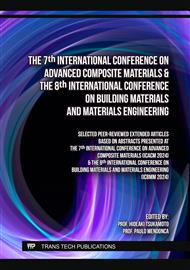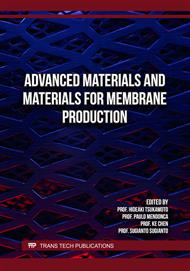p.57
p.67
p.73
p.81
p.87
p.93
p.101
p.111
p.117
Influence of the Incorporation of Recycled Glass Powder on the Fresh State Properties and Compressive, Tensile, and Flexural Strength at 7, 14, and 28 Days of a Sustainable Concrete with f'c = 280 kg/cm², Designed Using the ACI Method, in the City of Lima
Abstract:
Improper solid waste management in Lima, particularly glass, leads to severe environmental, social, and public health problems. The low recycling rate and waste accumulation contaminate soils and groundwater, impacting long-term quality of life. This research aims to evaluate the inclusion of residual glass powder (RGP) in concrete to enhance the sustainability of concrete design, focusing on San Juan de Lurigancho, where the highest amount of waste per person in Lima is generated. The proposed solution involves developing a waterproof concrete design by incorporating residual glass powder (RGP). This approach includes replacing 5%, 10%, and 15% of the cement in the mix to achieve a strength of 280 kg/cm², thereby reducing pollution from glass waste and CO2 emissions. Fresh concrete properties were evaluated and found to improve flow and temperature. The slump of fresh concrete increased gradually with the percentage of residual glass powder (RGP), reaching up to 16.5%. Regarding the properties in the hardened state, in terms of strength, replacing 15% of the cement with RGP resulted in a 2.57% increase in compressive strength. The tensile strength at 28 days increased by 21.53% and 16.8% when replacing 10% and 15% of the cement, respectively. However, replacing 15% of the cement resulted in a 0.4% decrease in flexural strength, while a 10% replacement resulted in a 1.44% increase. On the other hand, replacing cement with 15% RGP reduced CO2 emissions to 53.79 kg/m³. Additionally, a higher percentage of RGP in the concrete allows for cost savings of up to 12.2%, demonstrating a progressive reduction. From the analyses, it was found that the mix including 10% RGP stands out as the optimal option. It shows significant improvements in strength and profitability, reducing production costs by 3.4% and CO2 emissions by 10.83%. This design achieves an ideal balance between performance, cost, and environmental sustainability.
Info:
Periodical:
Pages:
101-109
Citation:
Online since:
December 2024
Keywords:
Price:
Сopyright:
© 2024 Trans Tech Publications Ltd. All Rights Reserved
Share:
Citation:



